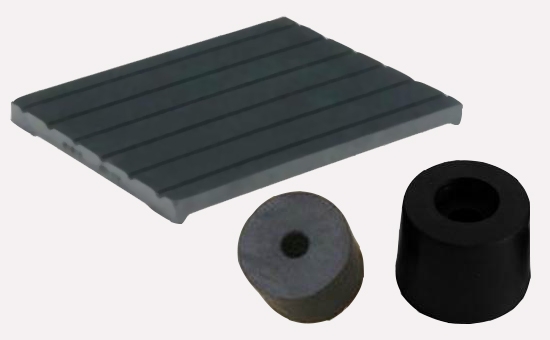
The reasonable use of rubber powder in rubber-plastic blending materials can achieve the dual goals of improving performance and reducing costs. In actual production, rubber powder can not only be used in materials such as polypropylene and polyethylene, but also play an important role in other materials. The editor continues to discuss with you the application skills of rubber powder in polypropylene materials and the specific uses in other rubber and plastic materials and issues that need attention today.
2. Rubber powder improves the toughness of polypropylene material
When rubber powder is used to improve the impact toughness of polypropylene materials, the smaller the particle size of the rubber powder, the greater the increase in impact strength and the increased tensile strength. About 15% of 100 mesh tire rubber powder is used in polyethylene, and the impact strength of the blended material can be increased by more than 25%. When the tire rubber powder is used to increase the toughness of the polyethylene material, the phenolic resin can also be used to modify the tire rubber powder; in the phenolic resin modified tire rubber powder/polypropylene blend material, a polymer containing a double bond structure is appropriately used Compatibilizers can further increase the tensile strength of blended materials.
After the tire powder/polypropylene blend material is treated with phenolic resin, the polymer compatibilizer containing a double bond structure is coated, and then the thermoplastic elastomer prepared by blending with polypropylene can have a significant elongation at break improve. In actual production, the double bond structure contained in the polymer compatibilizer and the rubber powder can react in the heat roller through the action of the phenolic resin. After the polymer compatibilizer and the rubber are combined, a strong interface effect will be formed; At the same time, the compatibilizer will also establish an excessive modulus between the polypropylene and the rubber powder, and ultimately achieve the purpose of significantly increasing the tensile strength and elongation at break of the rubber-plastic blending material.
3. Rubber powder improves the impact performance of polystyrene
Polystyrene synthesized from styrene monomer through free radical addition polymerization is the PS material we often say. Due to the rigidity of the molecular chain in the actual application process, stress cracking problems are frequent. Using the appropriate amount of rubber powder in the polystyrene 2LLYY73 material can significantly improve the impact resistance of the polystyrene material. Generally, the smaller the particle size of the rubber powder, the better the impact resistance. In actual production, rubber product manufacturers can also use reclaimed rubber and styrene-butadiene rubber together to further improve the impact strength of polystyrene blended materials.
In the actual production and application process, tire rubber powder, nitrile rubber powder, ethylene-propylene rubber powder, etc. can be used to modify rubber and plastic materials, while giving plastic materials good elasticity and mechanical strength, and effectively reducing production costs. Later editors will continue to share with you the role of various types of rubber powder in rubber and plastic blending materials and application skills.
Exclusive original article [commercial authorization] reprint, excerpt and excerpt in any form are prohibited without written authorization. Focus on Hongyun rubber: learn the process formula and raw material technology of producing rubber products from recycled rubber to help you reduce costs and increase profits